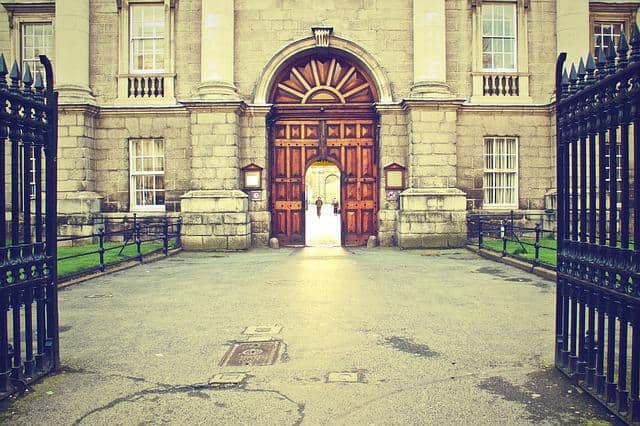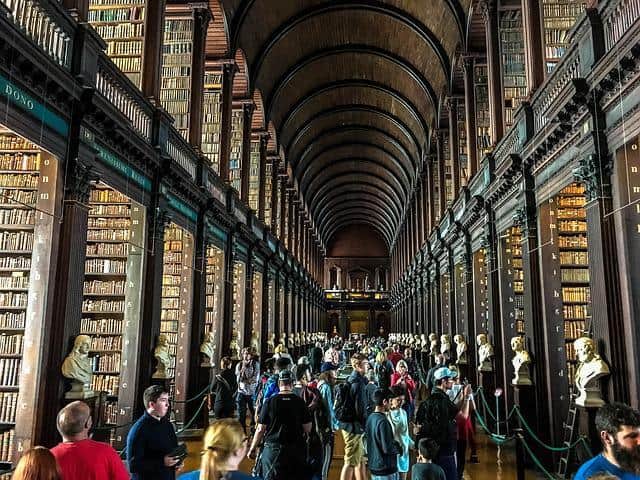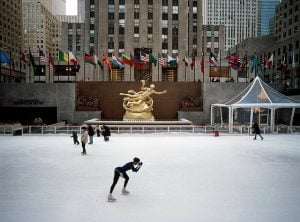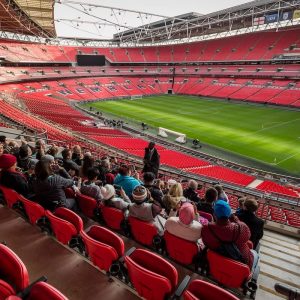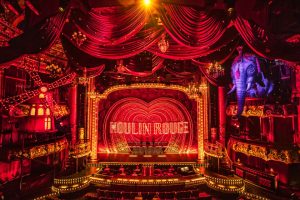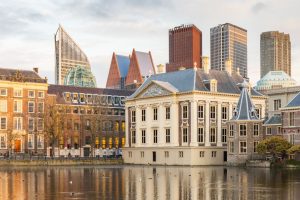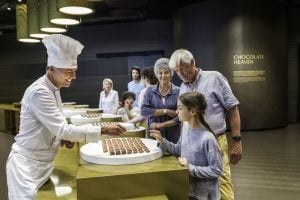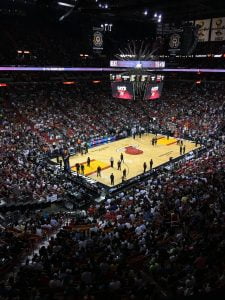The history of the university
Trinity College Dublin was founded in 1592, when it was founded it was mainly attended by clergy who learned how to perform civil duties. In the 90s, England had two old universities, and Scotland had four. The idea of establishing a university in Ireland arose at a time when the English state ruled and when Dublin began to function as a capital city.
The university was influenced by Oxford, Cambridge, but was an autonomous corporation committed to teaching and research, the founders of the college built it far east of the small town, the campus that was built was large. From the beginning, the college library was a first priority, and scholars assembled the first book collections.
During the next fifty years, the community grew: the institution received donations, new scholarships were founded, a curriculum was prepared, the international reputation of its first graduates helped place the college on the European map. But its existence was threatened in the seventeenth century, when the central government collapsed, the Catholic government closed the university, expelled the members and students.
Despite this the college became a much more significant institution in the late seventeenth century, prominent figures such as William Molyneux and St George Ashe were centrally involved in the Dublin Philosophical Society.
The following century was an era of political stability in Ireland, thanks to the monopoly of the landed upper class and to a large extent the Church of Ireland, and the college enjoyed ever-increasing revenues and it enjoyed the recurring patronage of the Irish Parliament across College Green, new buildings began to be built and the college expanded.
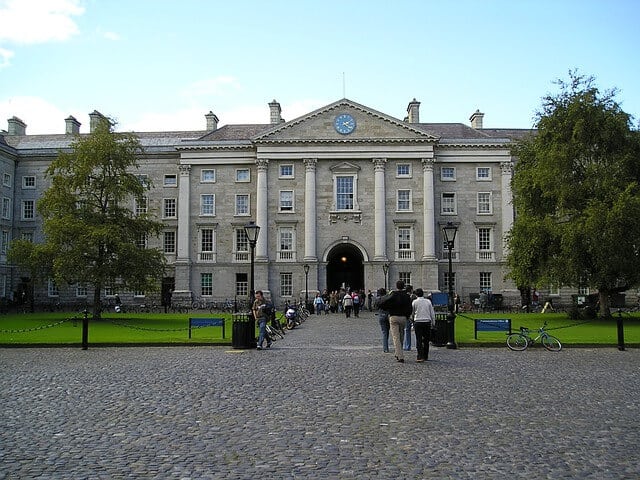
A massive new library was built (1712-1732), initiated by George Berkeley, another graduate of the college, who was librarian; The printing house (1733-4), the western front (1752-9), the dining hall (1760-65), and the tribute house (1759-61) were established.
During the second half of the century Parliament Square slowly grew, shaped by the Public Theater (1777-86) and the New Chapel (1787-98), designed by the architect Sir William Chambers. The expansion of the college buildings was completed at the beginning of the nineteenth century by the residential quarters and the construction of the new square.
Most of the outstanding Irish politicians and writers of the eighteenth century (Swift, Burke, Goldsmith, Grattan, Fitzgibbon, Tone) were Trinity graduates, and the influence of their university is evident in their writings and speeches.
Francis Andrews (1758-74), encouraged to teach science, astronomy and observatory; The undergraduate curriculum was a prescribed general course, including classics, mathematics, limited exposure to science, and some philosophical texts. This began to change from the 30s,
When it was possible to specialize in degrees in mathematics. In 1851 the subjects of experimental sciences were added (initially physics, chemistry and later geology, zoology and botany). And the new humanities disciplines emerged at the same time as guiding themes - in history and modern literature.
The professional schools were also changed during the nineteenth century: the law school was reorganized, and the teaching of medicine was on a much more advanced basis, aided by the appearance at the beginning of the century of a group of medical teachers who won international respect, the engineering school was established in 1842 and was one of the first of its kind in the Dover-speaking world the english Between 1830 and 1900, twenty standards were added for professors and scholarships were offered in mathematics, science, and the humanities.
The expansion of the college's teaching activities during the nineteenth century was evident in the changing campus landscape, most notably with the construction of the museum building (1853-7), which was designed to accommodate civil engineers and geologists. Recreational facilities, museums and terraces of student residences were installed.
And new buildings east of the college park reflected the growing importance of science and medicine in the college's priorities. Thanks to the Guinness family's philanthropy, architecture began to develop, laboratories, buildings for physics and botany departments were built between 1903-06.
The rebellion of the Irish who fought for Irish independence
Between the years 1873-1908, the college gradually repositioned itself and became a non-religious institution: in 1873, all religious exams were abolished (except those related to the Divinity School).
Women students were admitted for the first time in 1904, within a decade they amounted to 16% of the student body. But it wasn't until 1958 that the first female professor sat on the executive committee, in 1986 women made up more than half of all full-time students, and have maintained this increase ever since.
The Easter Rising of 1916, the rebellion of the Irish who fought for the independence of Ireland and its separation from British rule swept the college environment, and Trinity was not harmed by serious physical damages as a result of the shelling of the British in that rebellion.
However, the inflation during the war and the drastic erosion of its assets threatened the college's future. After the War of Independence in 1922, Trinity lacked the support of the new national government, was financially weak and recovering from a civil war, had more pressing priorities.
The college endured in the interwar period, but with limited philanthropic support, nevertheless degree courses were opened in commerce, economics and politics, from art history to public administration.
After the end of World War II, the university again asked for financial support from the government, an agreement was signed in 1947 that made it a large state-funded university, still around 1960, almost half of the student body came from outside Ireland (North and South), most of the students were from Europe and the USA.
The total student population remained small until the mid-sixties, the Irish government participated in capital investments within the college together with the college's fundraisers. At the same time, private philanthropy, by the Guinness family, and international philanthropic trustees, dramatically improved the stock of medical and scientific facilities, and enabled the development of new disciplines such as biochemistry, genetics and preventive medicine.
The real increase in the number of students began in the seventies when Ireland's economy began to establish itself, the career options for women were expanded, the goal was to attract more students from Ireland. The large Arts and Society building was built on the south side of the campus (opened in 1978). It was almost entirely financed by the national funds.
The diversification of the curriculum continued in the last quarter of the century, with the growth of information and computing sciences, medical treatments, nursing and teacher training. Mainly, there was a huge expansion of master's degree activity, both of taught courses and of research degrees.
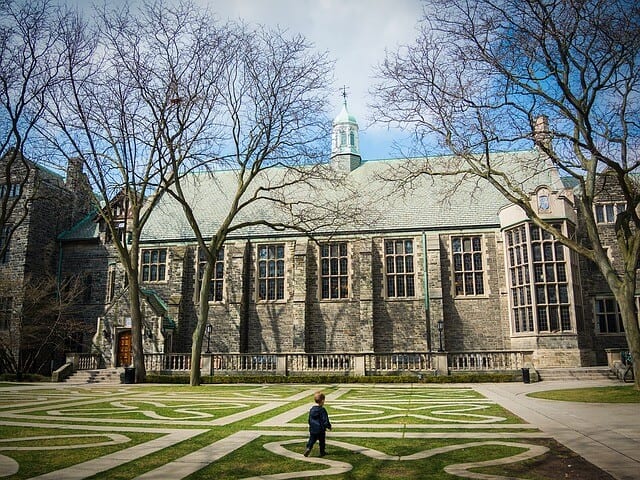
The supervision of universities became the responsibility of the Higher Education Authority, which was established as a statutory body in 1971, and its role and powers were greatly expanded by the Universities Act of 1997.
The state in the late 90s became the main source of revenue for the college, both through the direct grant and as a result of adopting a 'free tuition' policy for undergraduate tuition.
Following the huge increase in the number of Irish students studying at the college, there has been a new commitment to internationalism in recent years and a return to recruiting international students, initially in the field of medicine, and eventually in all fields, with a special focus on Asia.
In 1993, the college also began to increase recruitment from within the city of Dublin, the goal being to increase the number of young people from socio-economic and ethnic groups that are not represented in higher education at the university.
Another significant change in the second half of the twentieth century was in the composition of the academic staff: it gradually became international. The cosmopolitan nature of the college helped drive change in the curriculum, research and innovation throughout the institution.
In 1950, the academic staff amounted to less than 125, by 2011, there were 676 academics and 667 fellows and research assistants, out of a total of 860 employees.
Places in Dublin: Trinity College University
Trinity College Dublin was founded in 1592, when it was founded, mainly clergy studied there at first.
Most of the outstanding Irish politicians and writers of the eighteenth century (Swift, Burke, Goldsmith, Grattan, Fitzgibbon, Tone) were Trinity graduates, and the influence of their university is evident in their writings and speeches.
Between the years 1873-1908, the college gradually repositioned itself and became a non-religious institution: in 1873, all religious exams were abolished (except those related to the Divinity School).
Women students were admitted for the first time in 1904, within a decade they amounted to 16% of the students. But it wasn't until 1958 that the first professor sat on the executive board, in 1986 women made up more than half of all full-time students and so to this day.
In the event of the Easter Rising of 1916, the rebellion of the Irish who fought for the independence of Ireland and its separation from British rule swept the college environment, and Trinity was not harmed by serious physical damages as a result of the shelling of the British in that rebellion. However, the inflation during the war and the drastic erosion of its assets threatened the college's future. After the War of Independence in 1922, Trinity lacked the support of the new national government, was financially weak and recovering from a civil war, had more pressing priorities.
An increase in the number of students began in the XNUMXs when the Irish economy began to establish itself, the career options for women were expanded, they began to attract more students from Ireland, when before most students were from Great Britain and the United States.
A massive library was built between 1712-1732.

